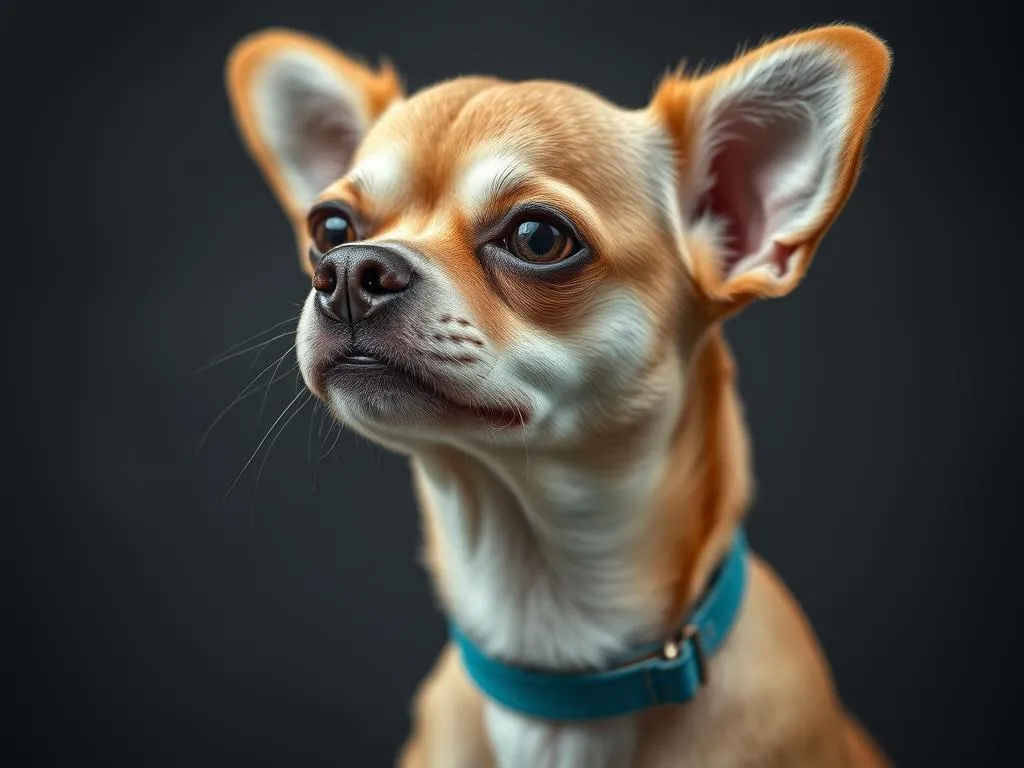
Introduction
Chihuahuas are one of the smallest dog breeds, known for their vibrant personalities and unwavering loyalty to their owners. With origins tracing back to Mexico, these little canines have a rich history that contributes to their unique characteristics. Despite their petite size, Chihuahuas often exhibit a bold demeanor, which can sometimes lead to misunderstandings about their temperament. Many people mistakenly believe that Chihuahuas are aggressive or overly yappy, but with proper training, they can become well-mannered companions.
Training is essential for Chihuahuas, as it not only helps to mitigate behavioral issues but also strengthens the bond between owner and pet. From managing their spirited energy to building confidence, effective training can transform your Chihuahua into a well-rounded member of the family. This comprehensive guide will delve into how to train a Chihuahua, providing you with the knowledge and techniques necessary for success.
Understanding the Chihuahua Temperament
Chihuahuas are renowned for their loyalty and alertness. They often form strong attachments to their owners and can be quite protective. However, their small stature can sometimes lead to challenges, such as stubbornness or anxiety. Understanding the typical behaviors of this breed is crucial for effective training.
Personality Traits
Chihuahuas are known for being:
– Affectionate: They love to snuggle and often seek out human companionship.
– Vocal: Many Chihuahuas are prone to barking, which can serve as a warning signal or a way to express excitement.
– Curious: Their inquisitive nature can lead them to explore their environment energetically.
Common Behavioral Challenges
While these traits make Chihuahuas endearing, they can also pose challenges. Stubbornness may lead to resistance during training, while anxiety can cause behavioral issues, especially in unfamiliar settings. Factors influencing temperament include genetics and early socialization experiences, both of which are crucial in shaping a Chihuahua’s behavior.
Preparing for Training
Before diving into training, it’s essential to be well-prepared. This involves gathering the necessary supplies, setting realistic expectations, and creating a conducive training environment.
Essential Supplies for Training
To effectively train your Chihuahua, you’ll need:
– Leashes and Collars: A lightweight collar and a sturdy leash suitable for small breeds.
– Treats: High-value treats that your Chihuahua loves can motivate them during training sessions.
– Training Aids: Consider clickers or training pads as helpful tools.
Setting Realistic Expectations
Training a Chihuahua requires time commitment and consistency. Understand that their small size may come with breed-specific quirks, such as a tendency to be easily distracted. Patience is vital, as each dog learns at their own pace.
Creating a Conducive Training Environment
To maximize your training efforts:
– Minimize Distractions: Choose a quiet, familiar space for training sessions.
– Choose the Right Area: A space with enough room for movement but free from overwhelming stimuli will lead to better focus.
Basic Commands Training
Teaching your Chihuahua basic commands is the cornerstone of training. Here are some fundamental commands to start with:
Teaching Commands
Sit
Step-by-step instructions:
1. Hold a treat close to your Chihuahua’s nose.
2. Raise the treat above their head; their bottom will lower as they look up.
3. Once seated, say “Sit” and give them the treat.
Common mistakes and troubleshooting:
– If they jump up for the treat, try using a higher value treat or practicing in a quieter area.
Stay
Importance of the command:
“Stay” is crucial for keeping your Chihuahua safe and preventing unwanted behaviors.
Techniques for effective teaching:
1. Start with your dog in a sitting position.
2. Open your palm in front of them and say “Stay.”
3. Take a step back, and if they stay, reward them.
Come
How to ensure reliability:
Teaching “Come” can be life-saving. Always use a cheerful tone and reward generously.
Using positive reinforcement:
1. Start in a controlled environment, say “Come,” and back away from them.
2. When they come to you, praise and reward immediately.
Down
Benefits of mastering this command:
“Down” can help calm your Chihuahua, especially in exciting situations.
Techniques for success:
1. Hold a treat in your hand, and guide them downwards while saying “Down.”
2. Once they lie down, reward them promptly.
Advanced Training Techniques
Once your Chihuahua has mastered basic commands, you can move on to advanced training techniques.
Socialization
Importance of socialization for Chihuahuas:
Socialization is vital for reducing fear and anxiety, helping your Chihuahua become a more balanced and confident pet.
Methods for effective socialization:
– Introducing to Other Pets: Gradually introduce your Chihuahua to other animals in a controlled manner.
– Exposure to Various Environments and People: Take your dog to different places and meet new people to broaden their experiences.
Leash Training
Benefits of proper leash training:
Leash training ensures enjoyable walks and keeps your Chihuahua safe.
Techniques for teaching leash manners:
– Loose-leash Walking: Start by rewarding your Chihuahua for walking beside you without pulling.
– Handling Distractions: Practice in areas with mild distractions before progressing to busier environments.
Crate Training
Benefits of crate training for Chihuahuas:
Crate training provides a safe space for your pet and can assist with house training.
Step-by-step guide to crate training:
1. Make the crate inviting with comfortable bedding and toys.
2. Introduce your Chihuahua to the crate gradually, allowing them to explore it at their own pace.
3. Start closing the door for short periods while rewarding calm behavior.
Addressing Behavioral Issues
Even with the best intentions, you may encounter behavioral issues. Here are some common challenges and their solutions.
Common Problems
Barking
Reasons for excessive barking:
Chihuahuas may bark due to boredom, fear, or the desire to alert their owners.
Techniques for reducing barking:
– Identify triggers and implement counter-conditioning strategies to modify their behavior.
Aggression
Identifying triggers:
Common triggers include unfamiliar people, animals, or sudden movements.
Strategies for managing aggressive behavior:
– Use desensitization techniques, gradually exposing them to their triggers while rewarding calm behavior.
Separation Anxiety
Signs and symptoms:
Look for signs such as excessive barking, destruction, or attempts to escape when you leave.
Tips for alleviating anxiety:
– Gradually increase the time spent away from your Chihuahua, using interactive toys to keep them occupied.
Positive Reinforcement Techniques
Positive reinforcement is a powerful tool in training. It encourages good behavior through rewards.
Overview of Positive Reinforcement
Benefits over negative reinforcement:
Positive reinforcement fosters a trusting relationship between you and your Chihuahua, making training a fun experience.
Types of Rewards
Common rewards include:
– Treats: Use small, tasty morsels as incentives.
– Praise: Your tone of voice can be a powerful motivator.
– Playtime: Incorporate their favorite games as rewards for good behavior.
Timing and Consistency in Reinforcement
Quickly rewarding your Chihuahua after they perform the desired behavior reinforces that action, helping them learn effectively.
Maintaining Training Consistency
Consistency is key in dog training. Establishing a routine will ensure your Chihuahua picks up commands and habits more quickly.
Importance of Routine and Consistency
Daily training sessions help reinforce learning, while sporadic training can confuse your dog.
Involving Family Members in Training
Make sure everyone in your household is on the same page regarding training commands and techniques. This uniformity will prevent mixed signals for your Chihuahua.
Keeping Training Sessions Engaging and Fun
Incorporate play and variety into your training sessions to keep your Chihuahua excited and eager to learn. Short, focused sessions are often more effective than lengthy ones.
Conclusion
Training your Chihuahua is a rewarding journey that lays the foundation for a strong relationship between you and your pet. Patience and persistence are crucial—every dog learns at their own pace, and understanding your Chihuahua’s unique personality will enhance the training process. Embrace the challenges, celebrate the victories, and enjoy the bond that training fosters.
FAQs
How long does it take to train a Chihuahua?
Training duration varies by individual dog, but consistent practice over weeks or months typically yields positive results.
What age is best to start training?
Starting training as early as eight weeks old is ideal, but older Chihuahuas can also learn effectively with the right approach.
Can Chihuahuas learn tricks?
Absolutely! Chihuahuas are intelligent and can learn various tricks with patience and positive reinforcement.









